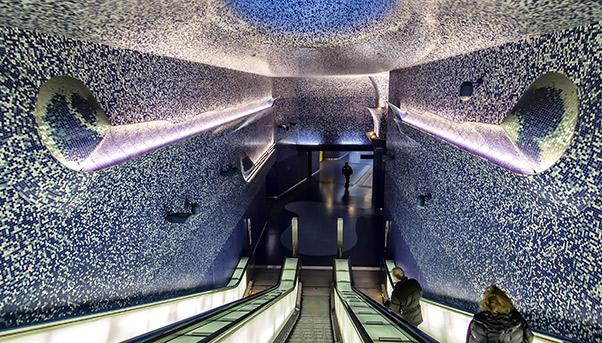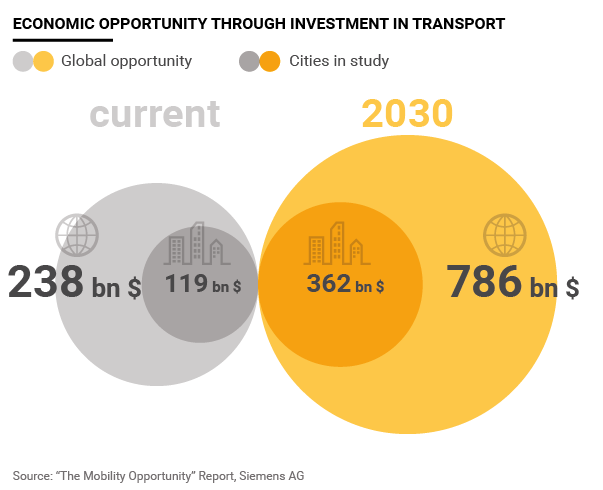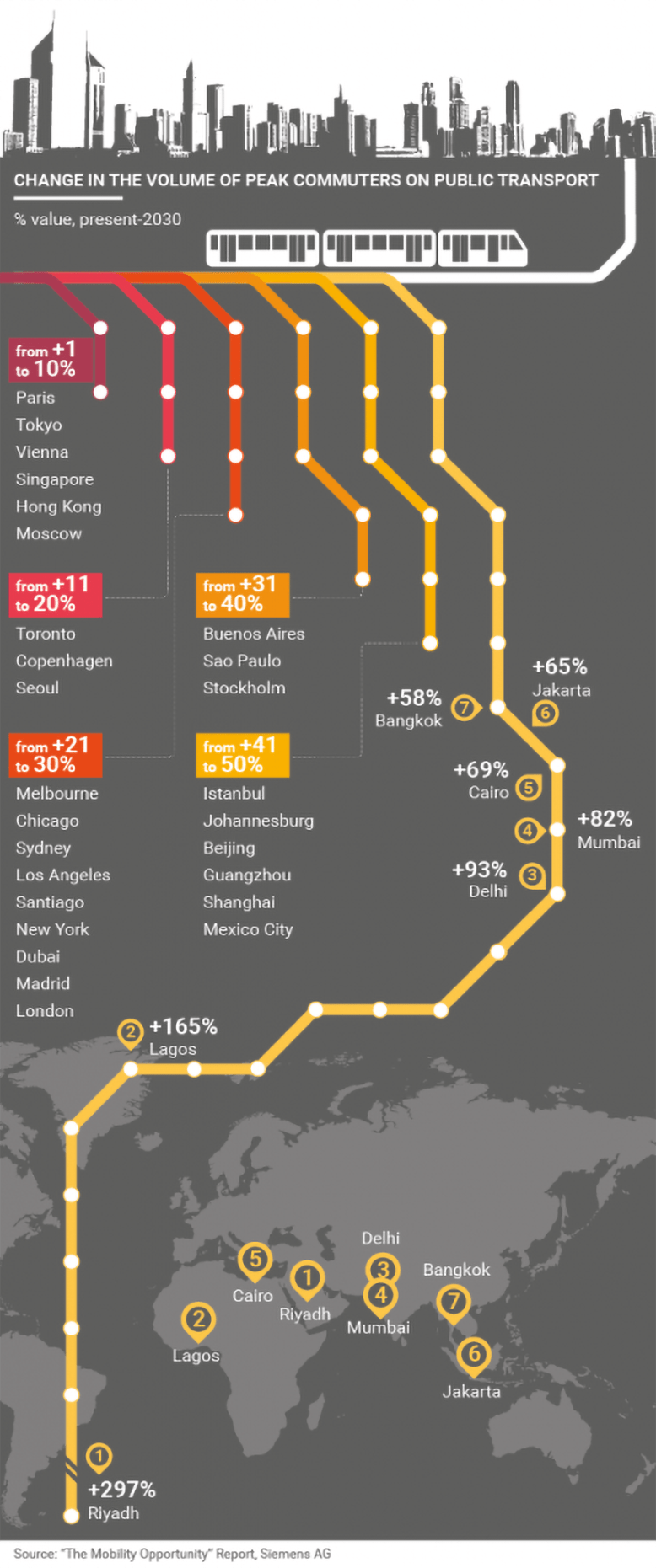
Scottish labourers, unskilled Irish workers, Welsh miners. One of the most fascinating stories in the history of engineering begins with these men: the construction of the London Underground. Their wages depended on the progress of the tunnel, a work of strong limbs and sturdy spades that saw them move at an average rate of 11 metres per week. Their hard work eventually led to the opening of the city’s first line in 1863, which ran 5.6 kilometres between Paddington Station and Farrington Street. More than 150 years later, London boasts one of the most extensive subway networks in the world with some 270 stations and 400 kilometres of lines. Its example was soon followed by other great cities. Paris, which inaugurated its first line on July 19, 1900, for the Universal Exposition. In New York, the subway came to represent the frenetic life of the Big Apple in cinema. The numbers associated with it inspire awe: on any given day, it carries an average of five million passengers, while the number totals a record of 1.5 billion on a yearly basis.
Like London, Paris and New York, many other large cities including Tokyo, Moscow and Seoul have built complex subway networks, offering efficiency in response to the problems of urban transport such as traffic congestion. Put together, these infrastructures comprise a vast underground network consisting of 214 subways, 791 lines and 11,924 stations which cannot be photographed without losing their sense of unstoppable movement. In addition to these examples, Riyadh and Doha in the Middle East as well as cities in Latin America, Asia and Africa are building their own underground lines. Modern, efficient and extensive – just like Sir Marc Brunel had imagined it. He was the engineer who invented the cast-iron tunnelling shield to help workers excavate underground, an application that helped bring to life to the London Underground.
The economic impact and the benefits of investing in transportation infrastructure

The enormous advantages offered by underground transport systems in terms of reducing traffic congestion and offering rapid transit are but two of the benefits that this type of infrastructure has come to provide – as confirmed by “The Mobility Opportunity”, a study conducted by Credo Business Consulting LLP in London and commissioned by Siemens AG. It analyzes 35 cities with the most modern subway systems and reveals how they stand to benefit economically to the tune of a $238 billion boost to gross domestic product (GDP) by 2030 if they invest to make their systems as efficient as the relevant “best in class” standards. In particular, it explains, the cities that stand to gain the most today in absolute terms are Tokyo with $15.4 billion, Moscow with $14.1 billion, London with $11.9 billion, Paris with $10.6 billion and New York with $9.8 billion. If one considers all of the cities in the world with more than 750,000 residents, the benefit earned from investing in transport could reach as much as $800 billion, equal to 1% of global GDP. Analyzing the best urban transport systems, the study indicates Copenhagen to be in first place. It is where Salini Impregilo is building Cityringen, the line that will encircle the city centre.
Things to know when investing in public transportation: the cost of subways
The benefits derived from investing in infrastructure are obviously related to the cost of urban transport for residents in terms of wasted time, use of car and many other factors. This cost is higher where the subway service in a given city is limited or non-existent. In a city like Copenhagen, the cost of transport is equal to 9% of GDP per capita, while in Lagos it rises to 28%. Another example would be New York, where the cost would jump from 15% to 18% of GDP per capita in the coming years if the city makes no new investments in its subway network. The case of Paris illustrates the balance between cost and investment. The French capital is planning to build a new metro line running 200 kilometres that will cost $27 billion. A huge project that will lead to the reduction by a percentage point the weight of the cost of transport for citizens from 14% to 13% of GDP per capita. In 10 years of service, the line will have repaid the investment made to build it in terms of economic benefits, while generating an additional $55 billion in economic value during its 30-year life.
Metro like works of art
The role and importance of a subway in the life of a city and its residents do not end with a cost-benefit analysis. From the first experiences of the 1800s to those of our times, its impact on society is such that it can transform this infrastructure into a symbol of development and well-being for a city. This is seen in cases where subway stations are built in such a way as to resemble works of art. Such is the impression that is made at the Toledo station in Naples, Italy, which was inaugurated in 2012 some 50 metres below street level. Thanks to the “Light Panels” work of designer Robert Wilson, the station appears to float between light and water.
Light also dominates in “Dome of Light” in Formosa Boulevard in Taiwan, a suggestive work by Italian artist Narcissus Quagliata and built with 4,500 glass panels. A more classic but no less fascinating style is found in the Moscow subway with stations like Komsomolskaya, inaugurated in 1952 with a design by Dmitry Chechulin using chandaliers, baroque décor and beautiful mosaics. Beauty and luxury are what is inspiring the Riyadh project where modern trains will sweep through stations of Arab taste and elegance. Architects, developers, designers and artists have given their contribution to make something go beyond its function as a simple infrastructure and become an instrument that retells the past and interprets the future.
Looking at the future of public transportation after investments

The future of the world’s great subway networks lies in technology. There are new driverless train systems (read “Driverless Metro”) as well as greater comfort and speed to meet the growing number of users. Examples of this evolution are Cityringen of Copenhagen, which will open in 2019 and transport 72 million passengers a year. In Riyadh, there are six new lines that will crisscross the city for 176 kilometres at a cost of $20 billion. Then there is London. The city that wrote the first page of the history of the underground that wants to put its signature on the latest one with the “New Tube for London”, a project that will have futuristic trains when it goes into operation in 2022 with an investment of 20 billion euros. The new trains will allow for an increase of 25% in the capacity of passenger transport and have wifi, information displays, LED lighting and a system that manages everything remotely. This is the frontier of new subway lines: unique infrastructure and invisible from the surface but so precious as to leave an indelible mark of the style and quality of life of a city.

